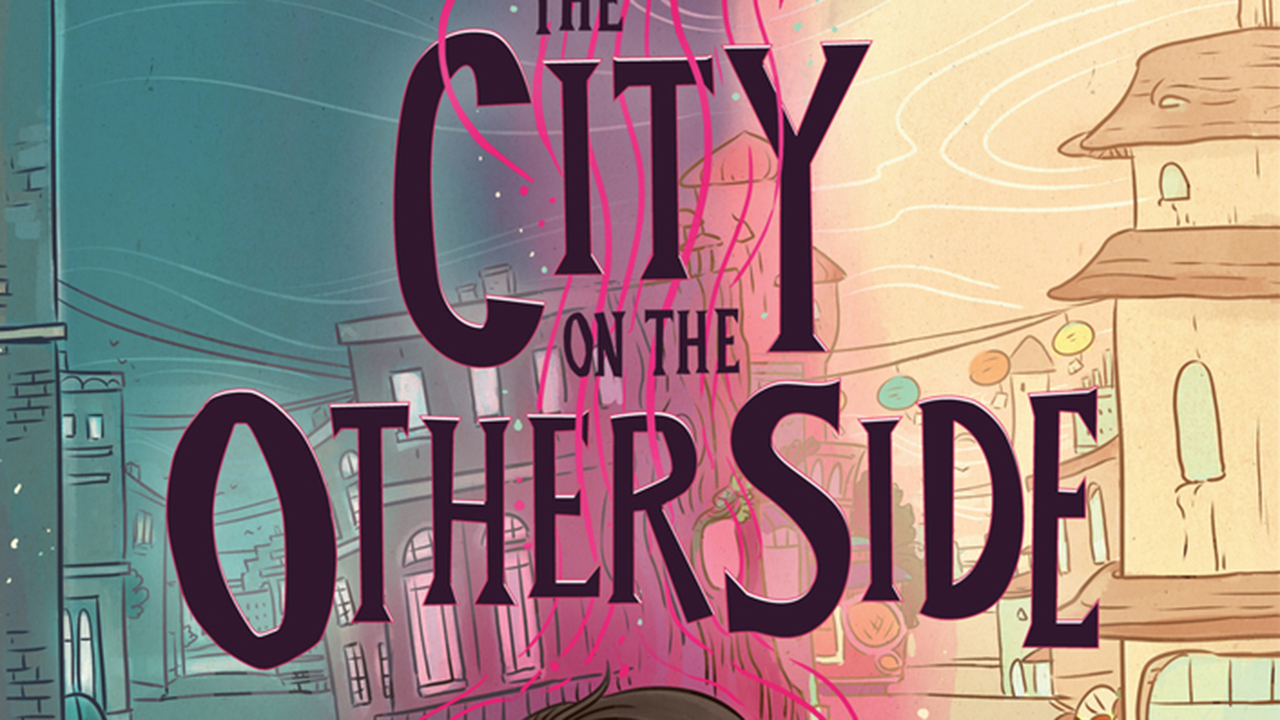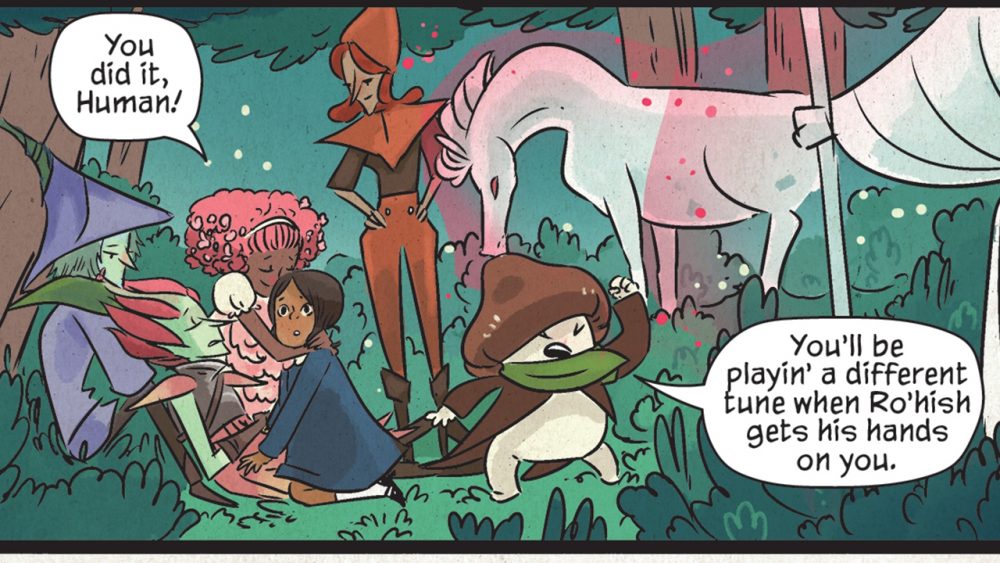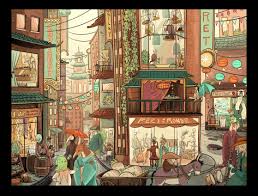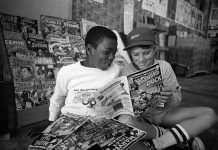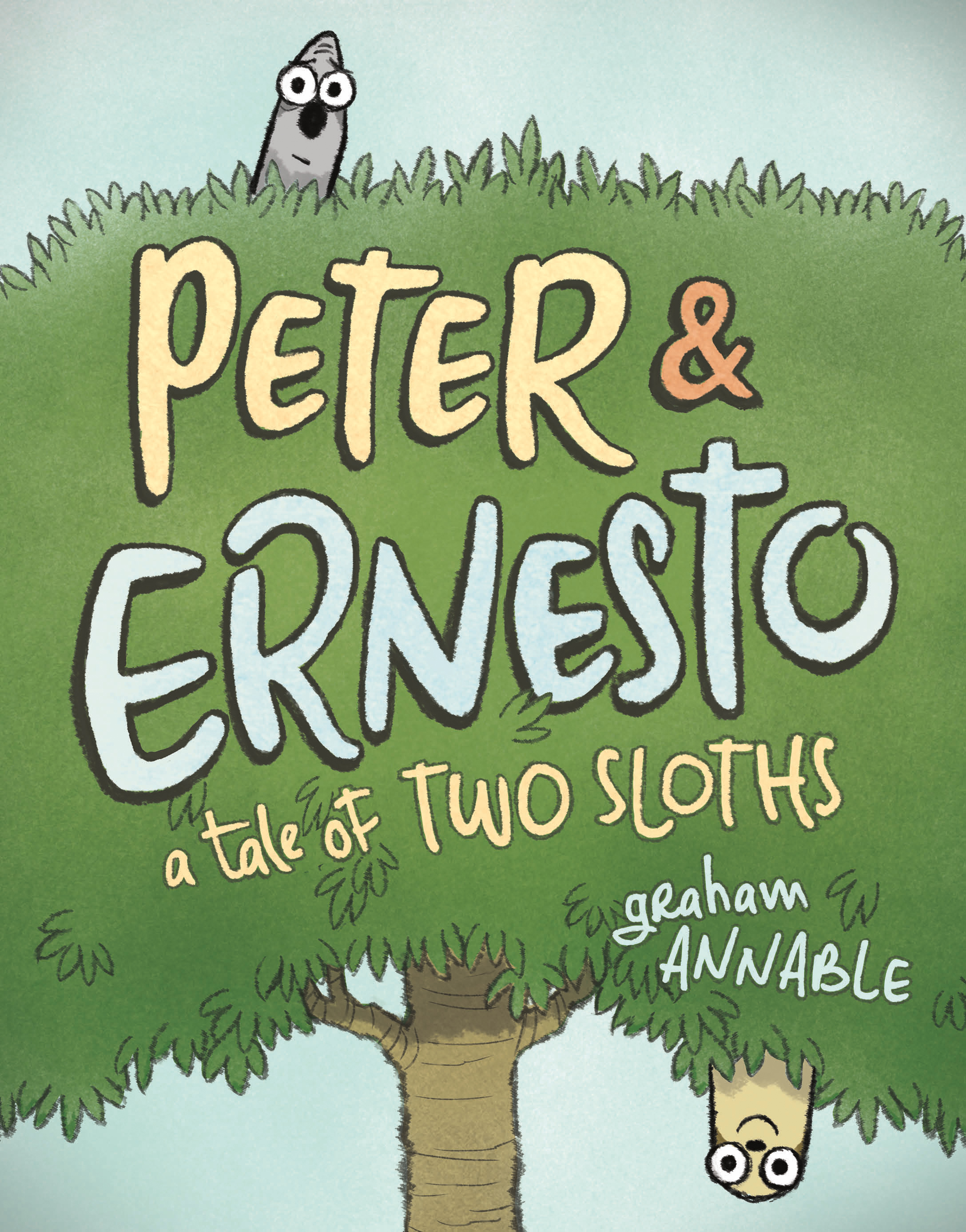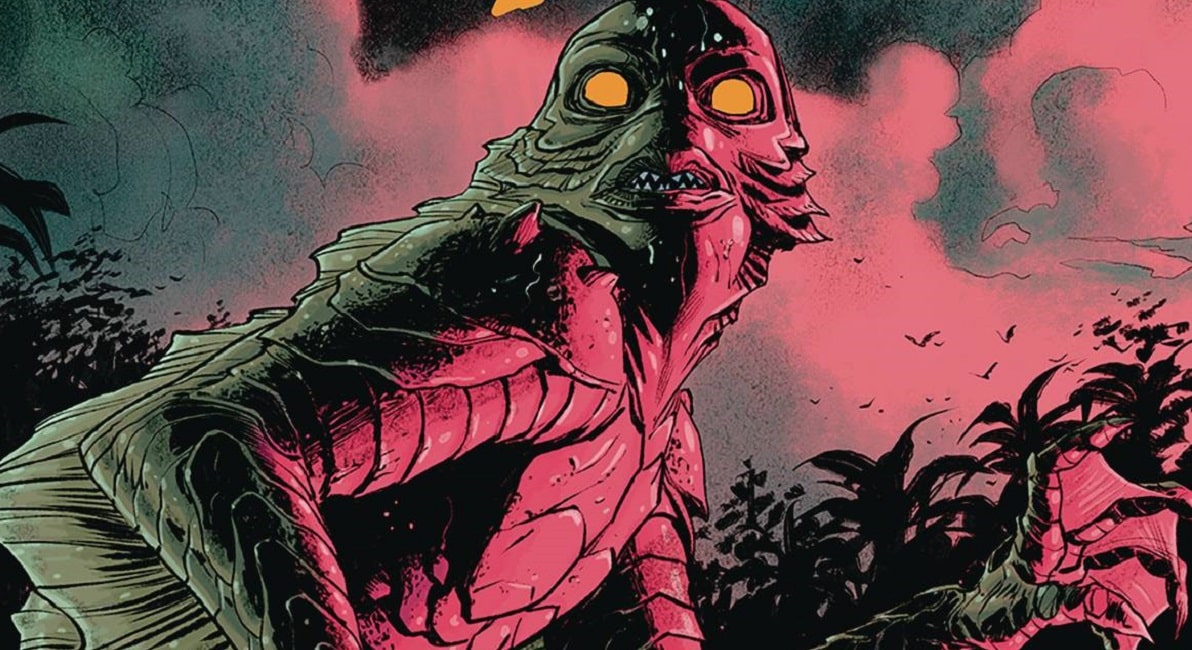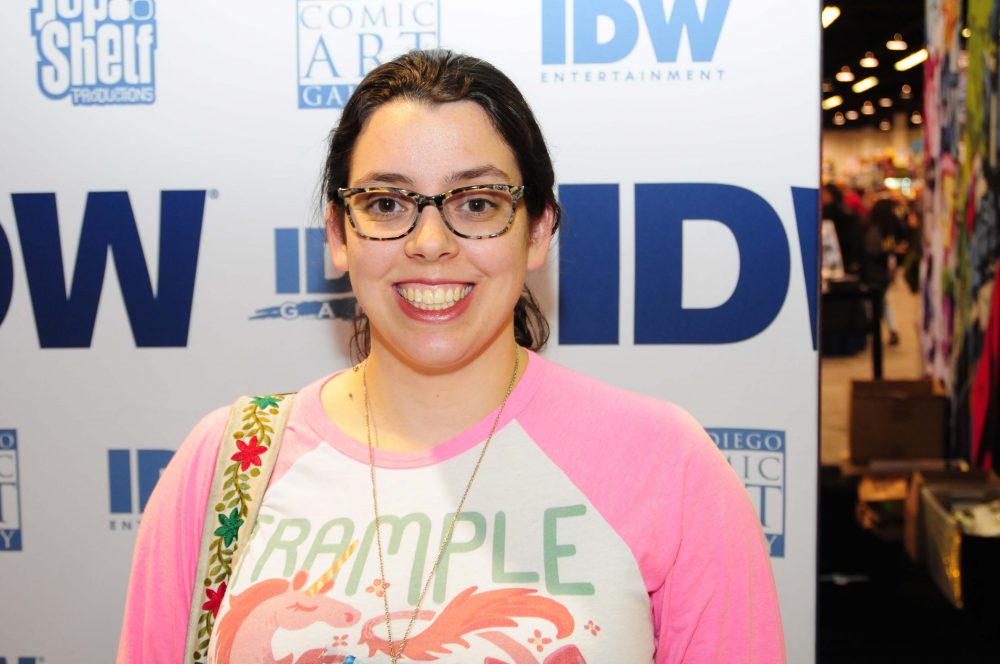
Mairghread Scott isn’t new to comics, having written already for the likes of IDW’s Transformers and Guardians of the Galaxy titles, as well as a comic turned graphic novel called Toil & Trouble, a retelling of the story of Macbeth from the viewpoint of the witches.
In her newest work, City on the Other Side, Scott flex’s her skills and imagination, writing for the first time in her career to a younger audience in mind. It follows a young girl named Isabel in 1910s San Francisco. The girl finds herself swept up in a faerie war, aided by a young boy named Benjie and a magical necklace that can make the city bend to her will. The story’s beautiful art is done by illustrator Robin Robinson.
At this year’s WonderCon in Anaheim, California, I had a chance to speak to Mairghread Scott about her and Robin Robinson’s work.
–
At a panel earlier today, you said “City on the Other Side” was marketed in a way as a Miyazaki. Having read the book, I definitely saw a lot of his art style. Was his work one of the influences for “City on the Other Side?
Oh, yeah. I always really loved his work. And I also loved his mix of nature’s interaction with man and with industrialization.
I grew up outside of Detroit, and I remember my favorite parts of the city had these houses that like had a tree growing out of it, or maybe a street that would end in the woods because all of the plant life had grown out. I remember just thinking, “I really want to write about those kind of places.” So, when we did City on the Other Side, I was just thinking about the idea of the life of a city. Having these sort of fairies, these spirits, that you always associate with nature, what do they look like in a city, in an urban environment.
Did you at any time live in San Francisco?
I was born in San Francisco actually, in the Height Ashbury district in the 80s. My parents moved, thought, when I was like one. So, it became this weird thing where everyone would always tell me about San Francisco and I knew a lot about the city, but I didn’t actually go there until I was an adult, when I had moved out to Los Angeles and decided to vacation there. I kind of always wondered about San Francisco, because it had always been this kind of ghost in my life, but I was kind of intimidated to write about modern day San Francisco. So, being able to dig into the history of the city became this really nice way of connecting with it in my own way, instead of just stories from my mom and dad.
What prompted you to write about San Francisco to begin with?
I loved the city, so I wanted to do something about that. But also, I became really fascinated with the idea of the earthquake [of 1906]; the “great quake.” There was just something about the idea that sparked in my head “what was the real reason behind it?” And in the book, the idea is that is the start of the faerie civil war causes the great quake. The main character doesn’t know this of course. She discovers it retroactively, but she also lived through the great quake. Being able to touch point on that specific moment in history just became a really-cool focal point for me and just kind of pulled me in.
What were some of your literary influences growing up?
It’s funny, because City on the Other Side is also really influenced by this book called From the Mixed-up Files of Mrs. Basil E. Frankweiler, which is this book about these two kids that sneak into The Met and they run away. It had these great little details, like the little girl who decides she’s going to run away from home. She’s all into planning, literally has her budget for running away and has maps of the Metropolitan Museum and where they would stay. I really loved this idea of these kids on this adventure.
So, when I knew I wanted to write this sort of fairytale, I wanted to give it a little of that, so we got out maps of San Francisco and tried to map out Isabel and Benjie’s journey. We wanted little kids reading the book to see that they could go to San Francisco and in essence walk the path that they walked and feel like that you could be on their adventure too.
Obviously, there was a lot of research into the world of fairies and spirits for this book. How much did you already know about them?
Well, I did know more about the mythos behind the Celtic and European side, which is where you get the “Seelie” and “Unseelie” courts, but it was really important to me and Robin that actually a lot of the faeries that you meet in San Francisco reflected the types of people that would have been in the city at that time. We ended up researching a lot of Japanese, Chinese and Native American myths, so you’ll see things like a hoping vampire in Chinatown and fox spirits. We even had a stack of radish spirits who were fighting someone, which was my most obvious nod to Miyazaki. I always loved the radish spirit from Spirited Away. We didn’t just want to do centaurs and pixies; we wanted to give it a larger feel… We even had sentient accordions with Robin Hood hats. Those were just fun.
How has this project been compared to some of your past work, like “Toil And Trouble?”
It was really interesting because I had never written comics for this young an audience before. I did do some Guardians of the Galaxy tie ins to the TV show, but this was the first time I felt like I was talking directly to young readers. And Robin’s art is so beautiful that it actually became a real exercise for me in restraint and trying to keep sort of the verbiage down and give the artist much room to breathe. So, it’s actually one of my most underwritten or sparsely written works. I didn’t want the characters to be nearly as talky or in their heads as they normally are for me, because I wanted it to have more of the fairytale feel and wanted the reader to come back to look at Robin’s beautiful world and build their adventure with Isabel, rather than just feel like they were being stuck in Isabel’s point of view.
What do you feel then about works that are very narrative heavy while having interesting visuals, like Neil Gaiman’s Sandman?
I love Gaiman’s work, but when I think of Neil Gaiman, his stories are so in the main character’s point of view. I wanted to expand out a little more, because I wanted kids to think “what would I do?” I want kids to think “what would I do in the faerie side of San Francisco?” Or, “where would I go if I could go to this place?” And Benjie and Isabel’s story is really crucial because I think it’s really relatable to kids, because a lot of kids just don’t feel seen by grown ups and it really is about learning to sort of speak up for yourself and to be seen and to ask for help and kind of “take up space.” I also think that it’s spare enough that kids can picture themselves in the story as well.
Speaking of being “unseen,” one of your major themes is that of feeling of being unseen by one’s parents. Why is that?
I feel like we get a lot of the tragic orphan stories, and actually Benjie who you meet is the classic sort of “street rat.” His parents died and he’s trying to make it on the street. But, you also hear this “poor little rich girl” story of Isabel’s, but I feel like there is this rise in benign neglect [nowadays], where there are kids who are just accessories, if you will, or kids whose parents just don’t have time for them. You can schedule activities with them, but that doesn’t mean you’re connecting as people. I felt like that was a newer story to tell. I feel like kids can feel kind of isolated today. It’s easy to do a lot of stuff, but not as easy to make friends and really make connections. You really can get lost in the shuffle of life these days. I felt that Isabel’s journey was a way to talk about a very modern problem in a situation that made sense in the past.
You’ve also worked with IDW. How was working on franchises that weren’t yours?
The hardest part was just pacing out all the exposition properly. When you pick up a Guardians of the Galaxy or a Transformers comic book, you pretty much already know the story beforehand. I don’t have to explain “they are robots that turn into cars” or “it’s a talking raccoon.” You already understand that information. So, figuring out not just how to tell this story but also explain this world to viewers was definitely the most challenging part.
When can we expect “City on the Other Side” to release?
City on the Other Side is coming out April 24th.


